The Ram Head Trail (often called the Rams Head) is a 2-mile-long hiking trail in the Virgin Islands National Park in St. John. It’s a popular option in St John despite its moderate challenge as it provides scenic views of the island and other surrounding islands like St Croix.
It can be particularly sunny and hot, so bring water and sun protection as there is little shade. The best time to take this hike is early in the morning when it’s still cool out, possibly at sunrise. You can expect to spend around an hour hiking it.
Visiting Ram Head at sunrise, sunset, or on a full moon can be an impressive experience. Those choosing to undertake this adventure should exercise caution. The steep, narrow, and slippery path, which can be tricky enough during the day, is even more perilous during periods of low light. Don’t forget to put on some quality hiking shoes with strong grip.
Ram Head Trail Overview
How To Reach Ram Head Trailhead
The trail to Ram Head Point begins at the eastern end of the Salt Pond Bay Beach. If you’re staying in Cruz Bay, it’s quite a trip, but worth it as it’s one of the best hikes in the whole US Virgin Islands you can go on. From Coral Bay, it’s only a 10-minute drive to Salt Pond Bay.
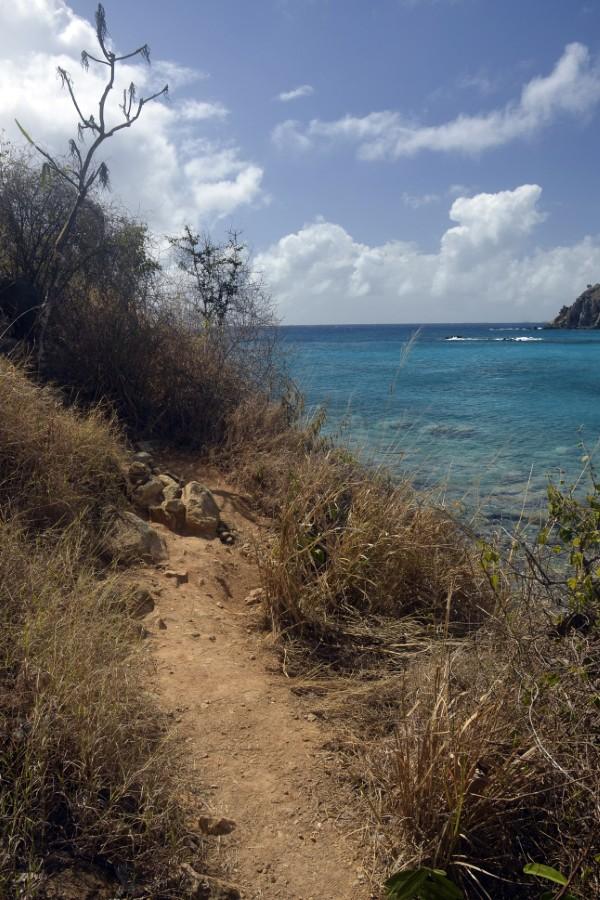
Begin by walking along the small rocks and coral rubble along the eastern shore of the bay. Here the West Indian top shell, locally called whelks, can be found adhered to the rocks near the water line. They are a St. John delicacy and are often prepared during carnival time.
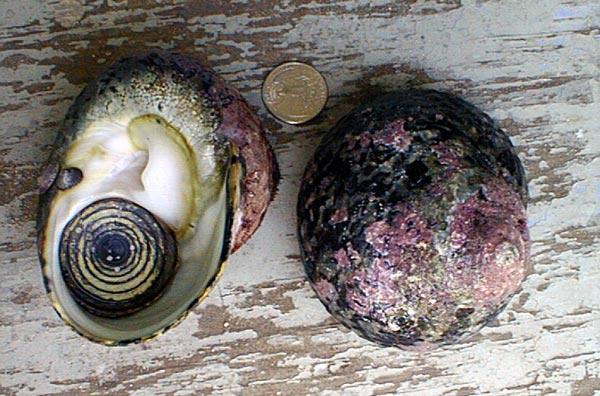
After about 100 yards, a defined trail begins and leads up over a hill. Rams Head ascends to an elevation of about 100 feet and then descends to sea level. There are great views along the whole length of the Ram Head Trail. However, a particularly fine vantage point can be found at the top of this hill.
There are four mature Lignum vitae trees growing right alongside the trail near the top of the first hill. At one time, much of the Ram Head peninsula was covered with Lignum vitae, but most were cut down by pre-colonial woodcutters. This is one of the few places on St. John where you can still find mature Lignum vitae trees in their natural state.
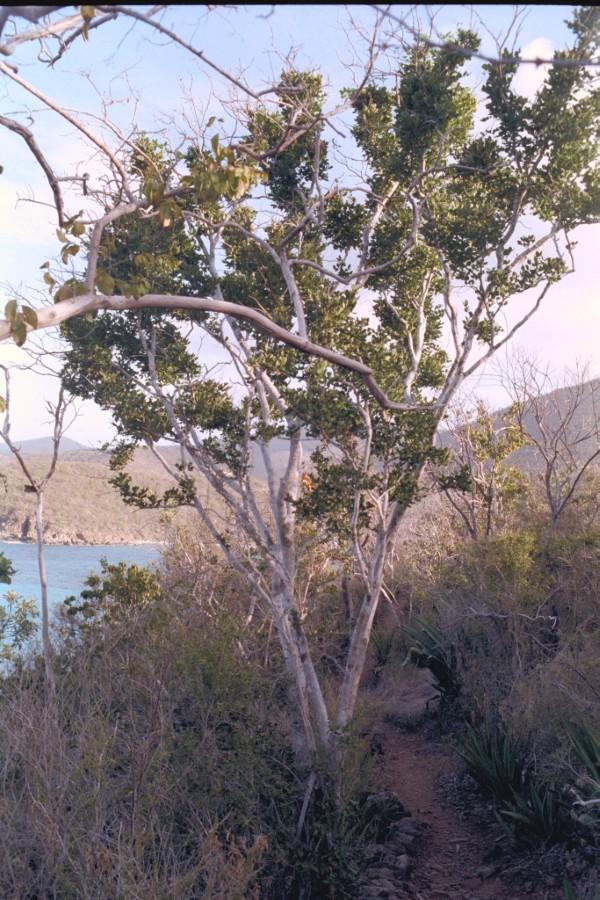
Beaches In Ram Head Trail
The path descends to a blue cobblestone beach. This rocky beach might be a full destination in itself, providing uncrowded swimming conditions and access to excellent snorkeling just north of the beach.
Blue Cobblestone Beach is one of our favorite spots to snorkel in St John. You can find sea turtles, rays, starfish, and various other marine life in the crystal clear waters.
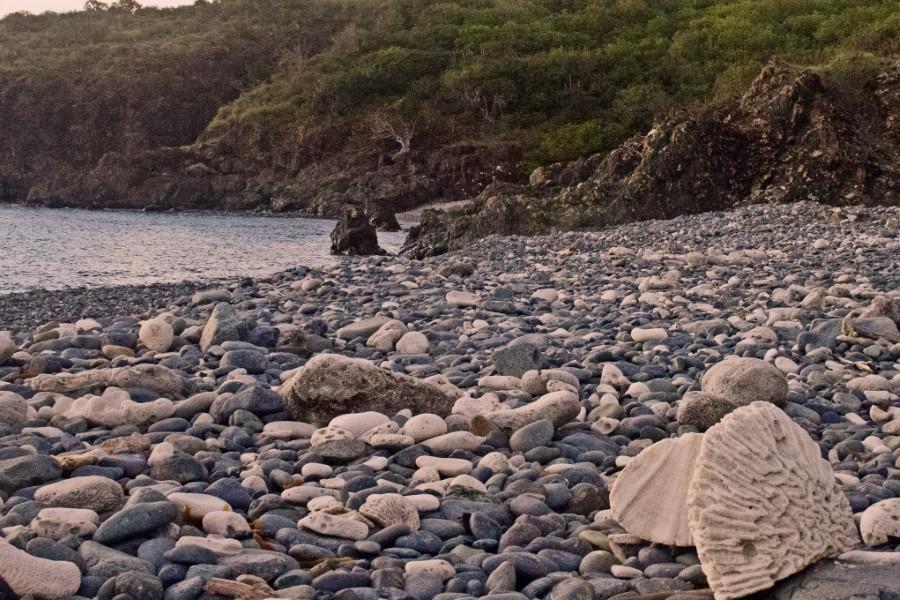
The trail to Ram Head continues at the south end of the beach and provides more gorgeous scenery. Walk along the coast until you see the path, which should be marked by a Virgin Islands National Park information sign.
This section of trail gains elevation through a series of switchbacks and proceeds up the hill to the saddle area of the peninsula. The predominant plant species here are the barrel or Turk’s head cactus, which produces edible fruit and attractive black caper trees, identified by their dark bark and narrow leaves.
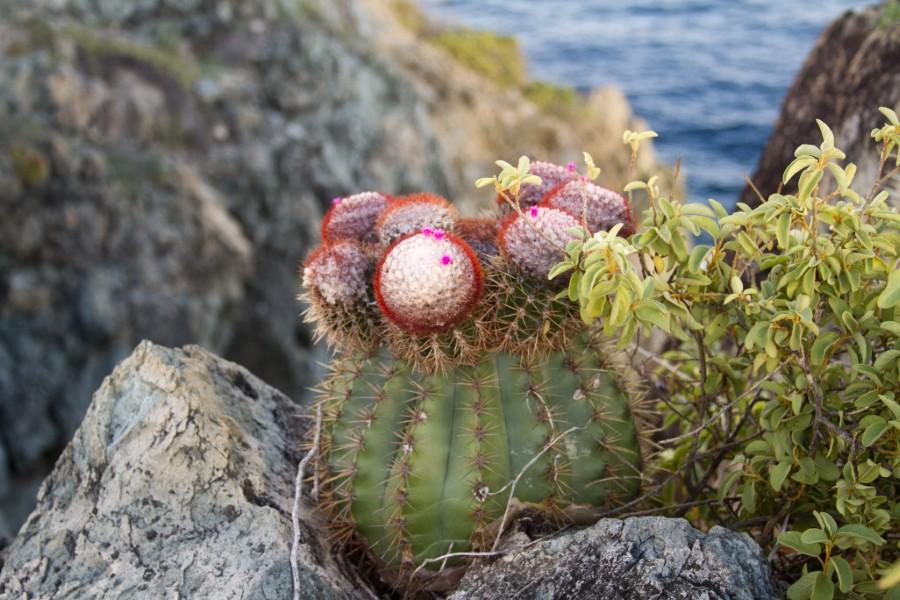
You will often see wild goats grazing along the rocky hillside. These goats have degraded the environment by eating much of the vegetation, resulting in the erosion of the topsoil in times of rain.
At the top of this hill, you come to the saddle or low point between two hills. A fault line cuts across the narrow peninsula here. The views are dramatic.
You can look down the cliffs on the eastern side and see waves crashing onto the small cobblestone beach between the cliffs. The view to the west is tranquil and serene, in stark contrast to the windy and rugged eastern exposure.
Views from Ram Head Trail
The trail continues up the next cactus-covered hillside via a series of switchbacks leading to the top of Ram Head Point.
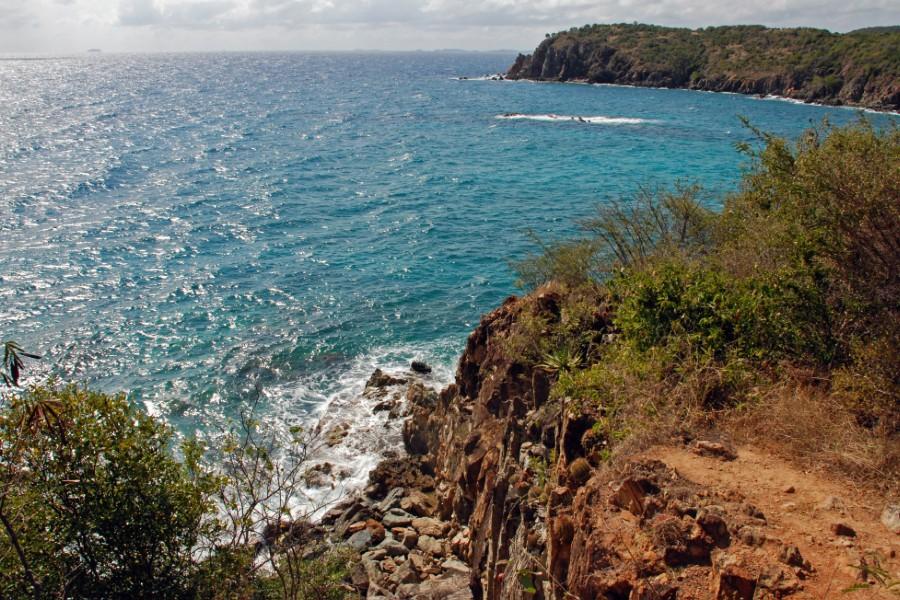
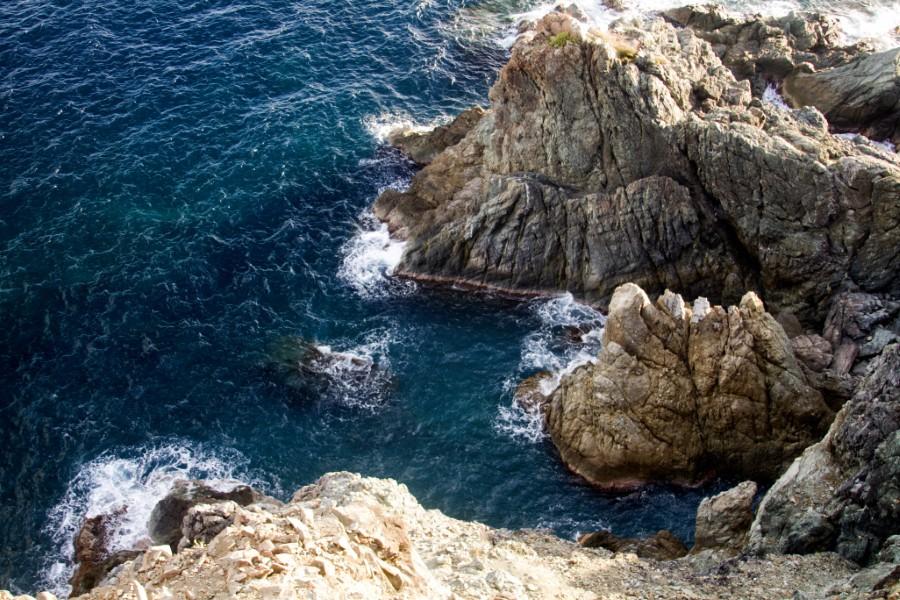
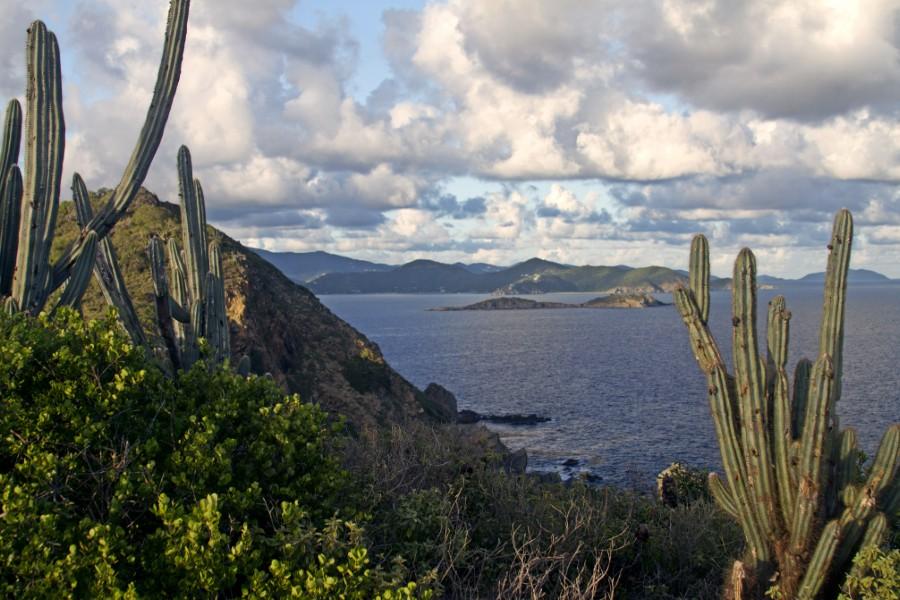
Geologically, the rock that makes up this headland is the oldest rock found on St. John. Evidence supporting this theory was gained when geologists, using diamond-tipped drills, bored into the rock at Ram Head.
They drilled down more than a half mile before breaking through the last of the rock. The new substance brought up by the drill was examined and shown to be the same material that makes up the ocean floor, indicating that no other rock was there before it.
History of Ram Head Trail
It has been speculated that this remote and inhospitable region provided a hideout for runaway slaves, called maroons, who lived here just before the slave rebellion in 1733.
This was a time of severe drought in St. John. Food could not be easily grown and was in scarce supply. The biggest problem the maroons faced was finding fresh water. The underground springs had dried up along with the freshwater pools of the major guts. On Ram Head, the maroons could provide themselves with food and water.
Water could be found stored in the cactus that proliferated on the peninsula, and the Caribbean sea around the point provided excellent fishing. Whelks could be picked along the rocky portions of the coast, and conch could be harvested on the grassy seabed of Salt Pond Bay Beach.
For these reasons, Ram Head is thought to have been a stronghold for the Akwamu tribesman who rebelled against slavery in 1733. When the tides of battle turned against the rebels, a group of warriors ended their lives here rather than face capture.
